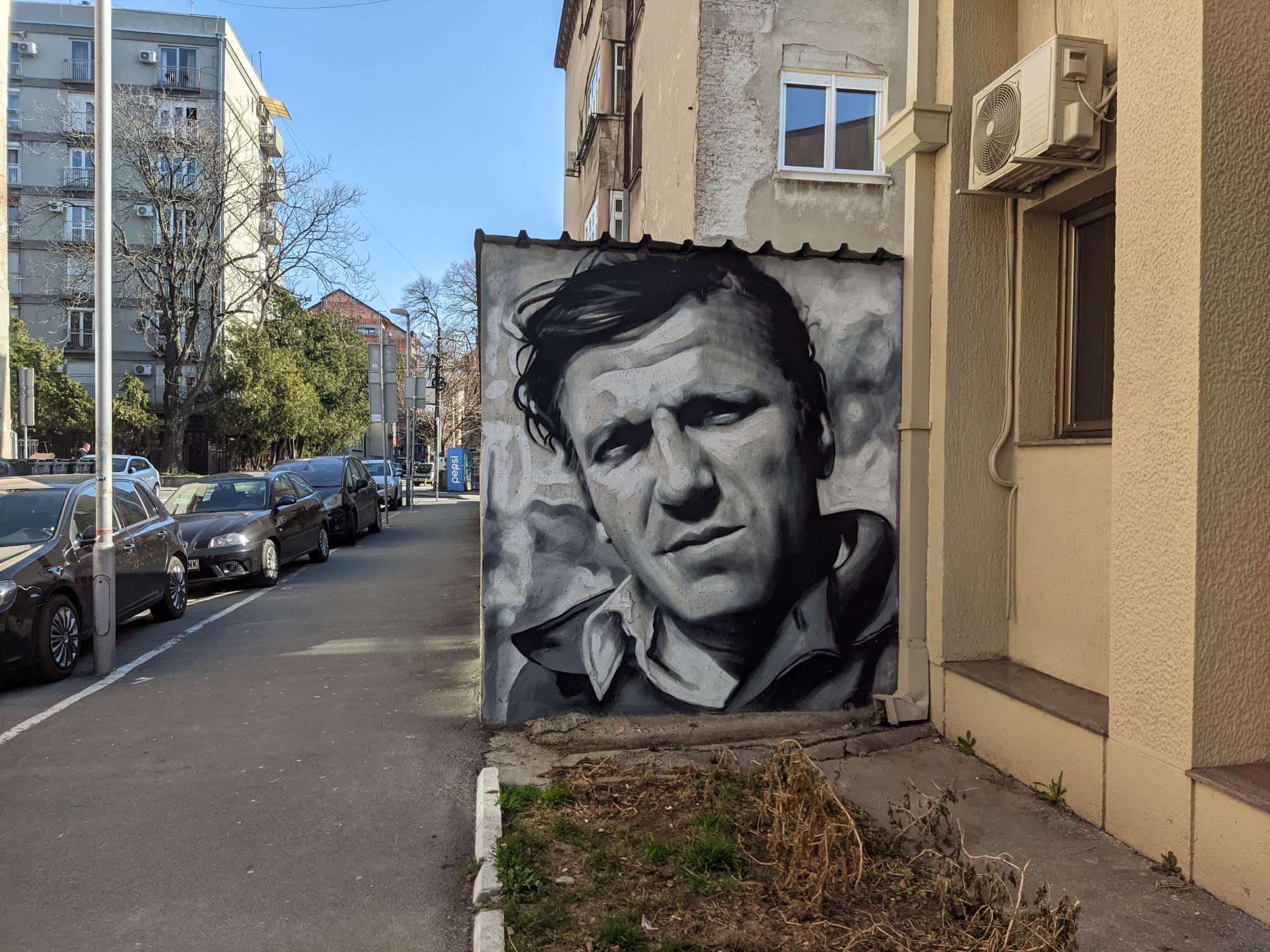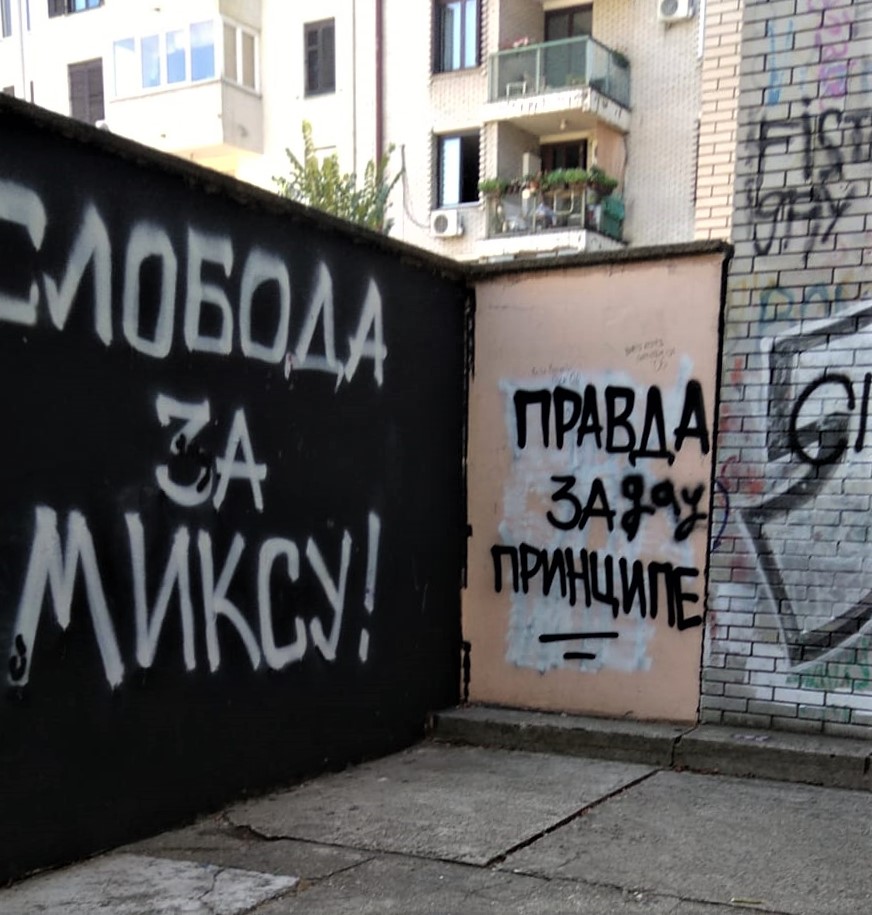Murals of deceased public figures
The murals dedicated to deceased public figures is a phenomenon seen worldwide, including in Serbia. After the death of certain public personalities, especially from the entertainment industry, street artists create portraits as a tribute to their contributions to culture and art. Notable murals in this series include those of British singer Amy Winehouse, musician David Bowie, boxer Muhammad Ali, basketball player Kobe Bryant, actor Robin Williams, and more. When it comes to Belgrade artists, mention should be made of musicians Dragoljub Đuričić and Džej Ramadanovski, as well as actors Danilo "Bata" Stojković, Petar Kralj, Marinko Madžgalj, Borivoje "Bora" Todorović, Zoran Radmilović, Velimir "Bata" Živojinović, Milena Dravić, and Dragan Nikolić. They are depicted in places associated with their lives, work, or other characteristics, such as murals behind the Atelje 212 theater and near the Belgrade Drama Theatre dedicated to deceased actors, or a mural of Džej Ramadanovski near a tavern in Dorćol where he often spent time.
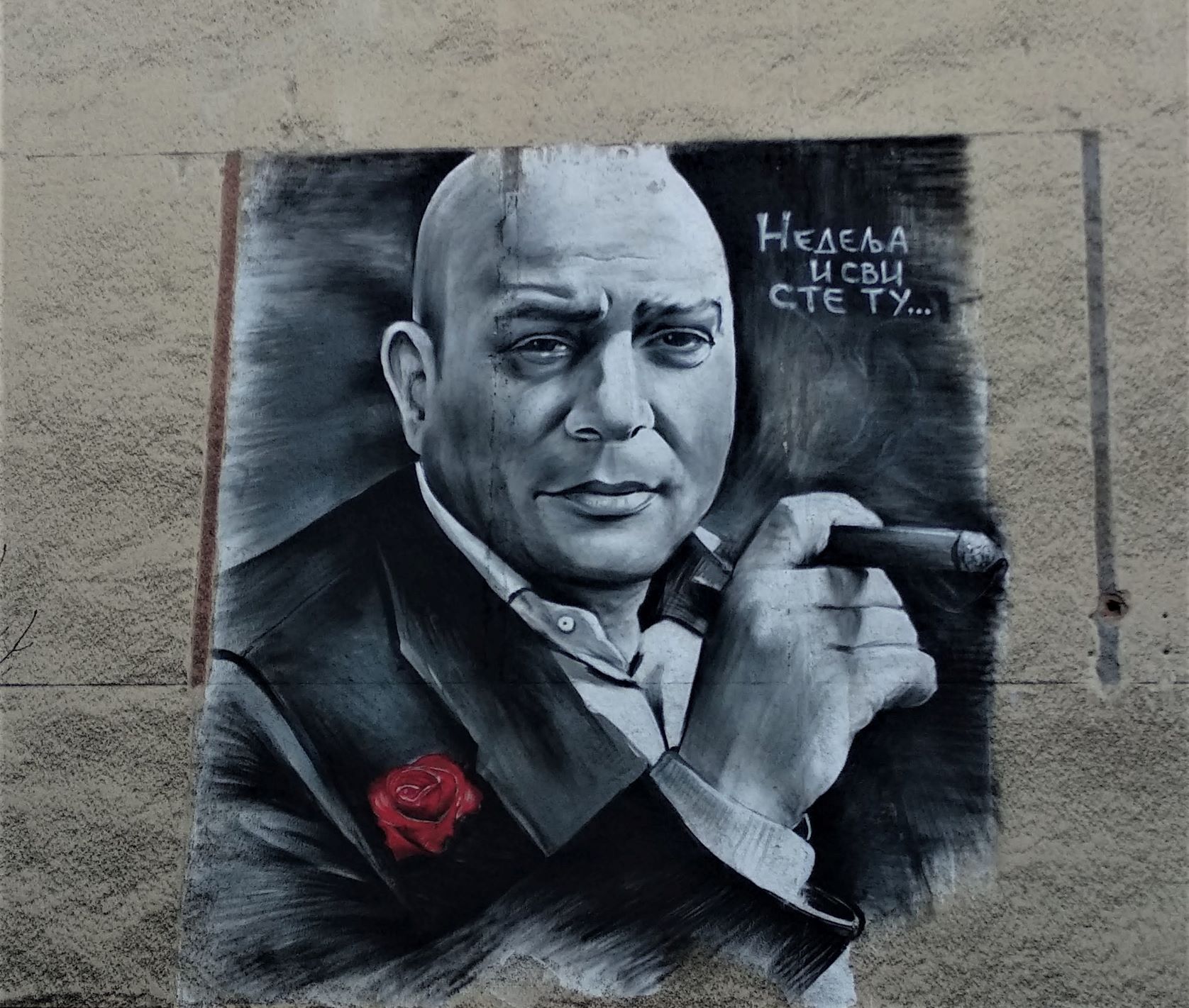
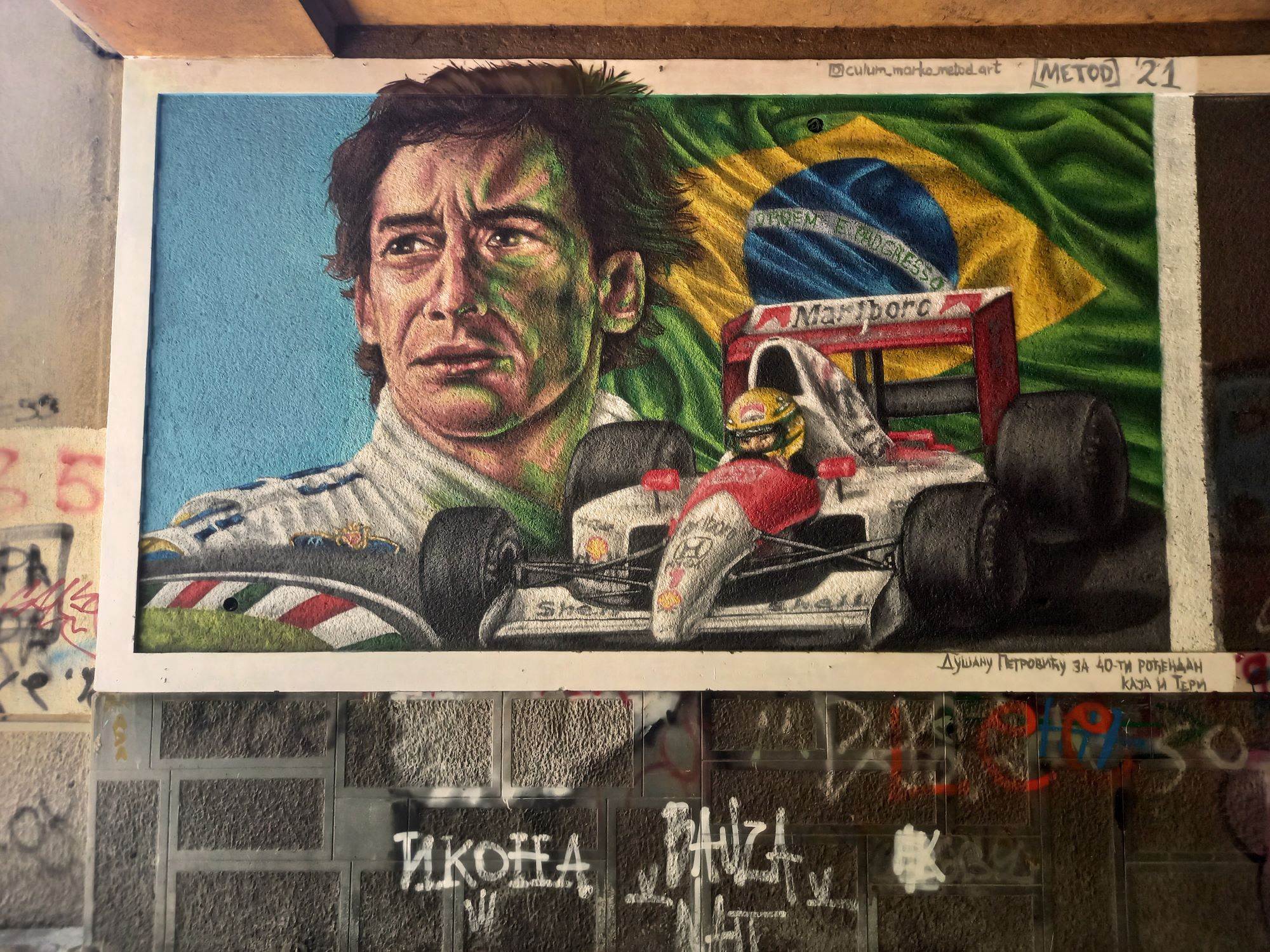
Murals of historical figures
he attitude towards national history in Serbia represents an important component of collective identity. Therefore, it is understandable that among painted murals, those depicting historical figures stand out. They are becoming increasingly present in public spaces, adorning the facades of residential buildings as well as communal areas or walls of abandoned industrial structures. Portraits belonging to this group of murals are generally recognizable or at least familiar on a national or local level, representing a part of the national history of a specific place.
One of the most common motifs when it comes to historical figures, both in Belgrade and throughout Serbia, is the portrait of Nikola Tesla. As a globally recognizable personality due to his contributions to science and his origin, Nikola Tesla can be found on walls not only in Belgrade but throughout Serbia. His image is associated with a sense of national pride, without a specific political-ideological background implied by the authors in cases of some other portraits of historical figures.
Another frequently seen mural in Belgrade and other cities in Serbia is the portrait of Gavrilo Princip, which carries a clear political and ideological context — as a symbol of national pride, revolutionary spirit, struggle for liberation, and Serbian unity. Alongside Gavrilo Princip's portrait, there might be the quote, "Our shadows will walk in Vienna, wander through the palace, frighten the lords," believed to have been written by Gavrilo Princip himself while imprisoned in Sarajevo, after which he was transferred to the Terezin prison in Czechoslovakia, where he died.
In a series of historical murals, portraits of Russian Tsar Nicholas II Romanov, Bishop Petar Petrović Njegoš, Duke Živojin Mišić, a Serbian military leader from the Balkan Wars and World War I, appear. Often, the murals are accompanied by quotes with a clear political goal of provocation or awakening national pride. For instance, alongside the mural of Njegoš, the text reads, "Everyone is born to die once; honor and disgrace live forever!" Next to the mural of Karađorđe, the inscription reads, "Serbia cannot be calmed down." or next to the portrait of Duke Živojin Mišić — "General, we are surrounded! Excellent, my born one, now we can attack in all directions!"
One of the most dramatic political events in the early 21st century was the assassination of Serbian Prime Minister Zoran Đinđić. The assassination of Prime Minister Zoran Đinđić took place on March 12, 2003, at the entrance to the Government of Serbia building. Zoran Đinđić was the Prime Minister of the Government of Serbia after the democratic changes, from January 2001 to March 12, 2003. A year after the assassination, in 2004, a commemorative plaque was placed at the entrance to the Government building, where Prime Minister Đinđić was shot. The plaque bears Đinđić's quote: "If someone thinks they will stop the enforcement of the law and reform by removing me, then they are seriously mistaken."
The mural located on the plateau across from the entrance to the Faculty of Philosophy was created in 2018, and after a few days, it was damaged by paint. The mural has been cleaned and restored every few months. The current state is such that the mural has been placed at a higher level, partially protecting it. The mural shares a stylistic resemblance to others in Belgrade — leaning towards hyperrealism. What sets it apart is its location on the plateau of the Faculty of Philosophy, where Đinđić studied philosophy.
Zoran Đinđić was born in 1952 in Bosanski Šamac. He graduated in philosophy in Belgrade and obtained his doctorate in Germany, where he went under political pressure in the late 1970s. He was one of the founders of the Democratic Party, and in 1994, he was elected as its president. From February to September 1997, he served as the mayor of Belgrade, representing the Zajedno coalition. After the victory of the Democratic Opposition of Serbia (DOS) in the parliamentary elections in December 2000, he was elected as the Prime Minister in January 2001.
The mural located on the plateau opposite the entrance to the Faculty of Philosophy was created in 2018, and after a few days the mural was desecrated by paint. However, the mural was restored every few months, after which it would be desecrated again. The recent situation is such that the mural is placed on a higher level, so desecration is difficult. The mural is stylistically similar to other murals in Belgrade—with a tendency towards hyperrealism. What marks it is the place where it is located—the plateau of the Faculty of Philosophy, the oldest higher education institution in Serbia. The mural is located in the place where Đinđić studied philosophy.
A commemorative mural for the political activist Oliver Ivanović, the slain leader of the Civic Initiative Freedom, Democracy, Justice from Kosovo, is located near the police station on Despot Stefan Boulevard. The portrait is accompanied by the text "You cannot live in an atmosphere of fear." This mural has not been damaged, repainted, or desecrated.
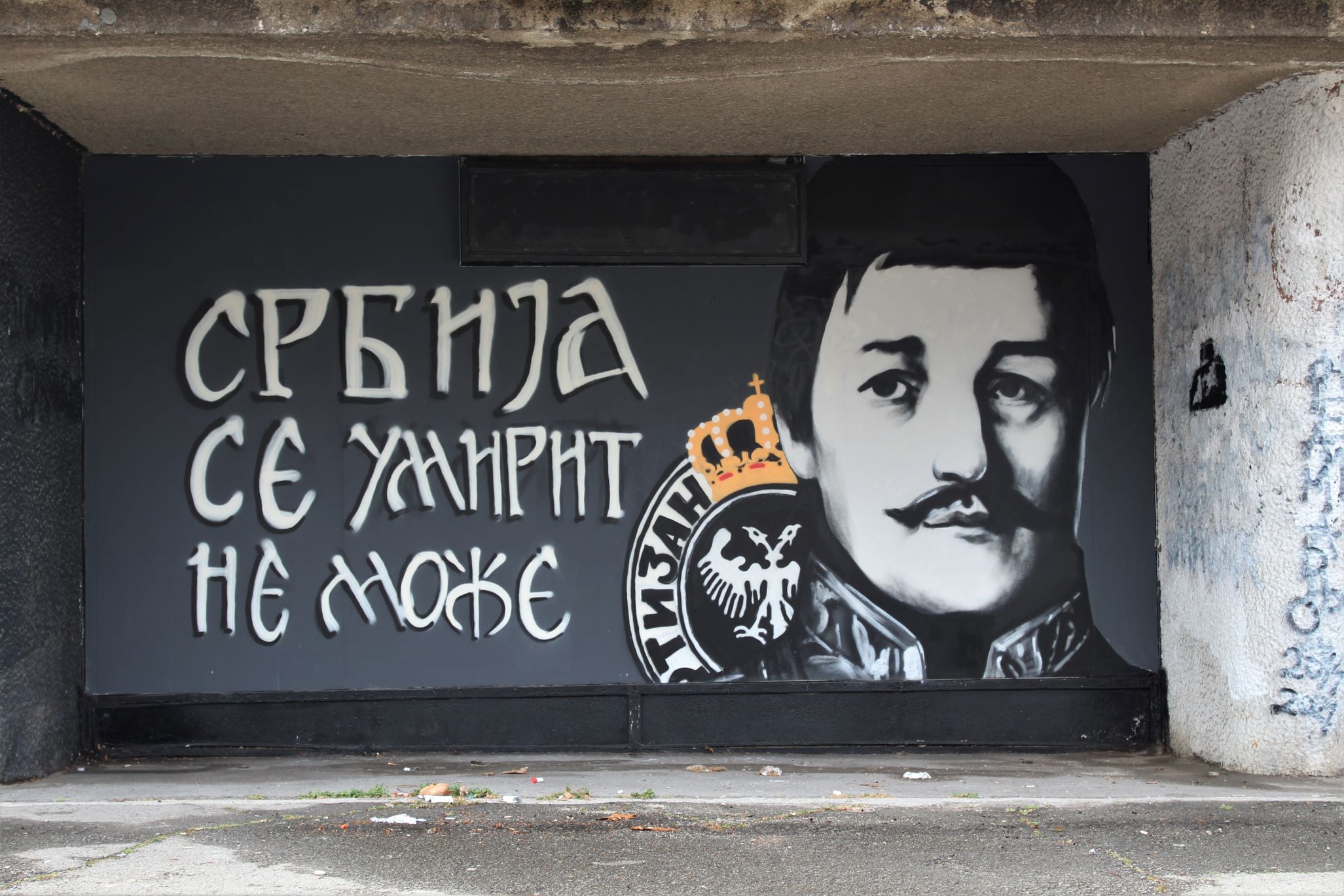
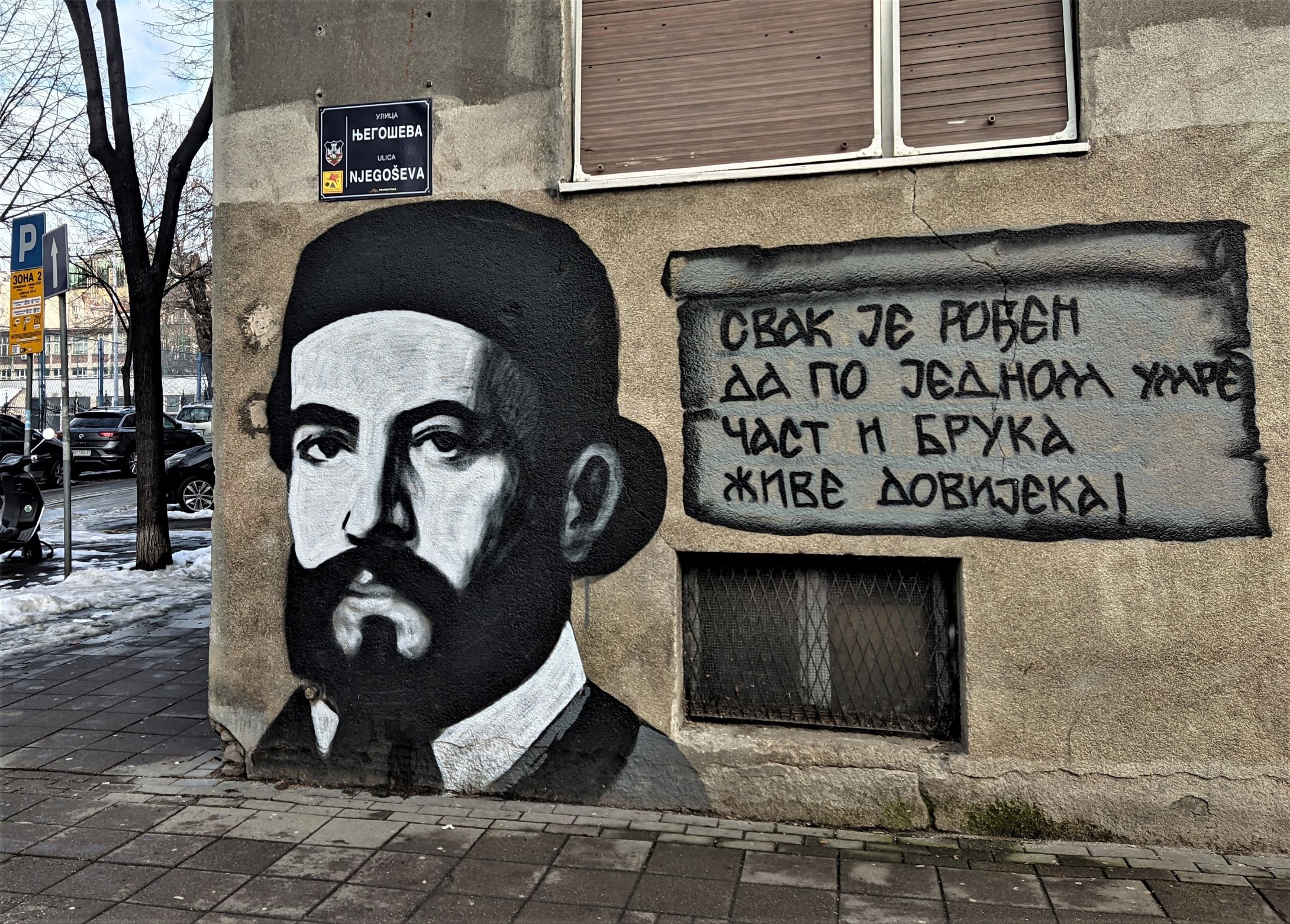


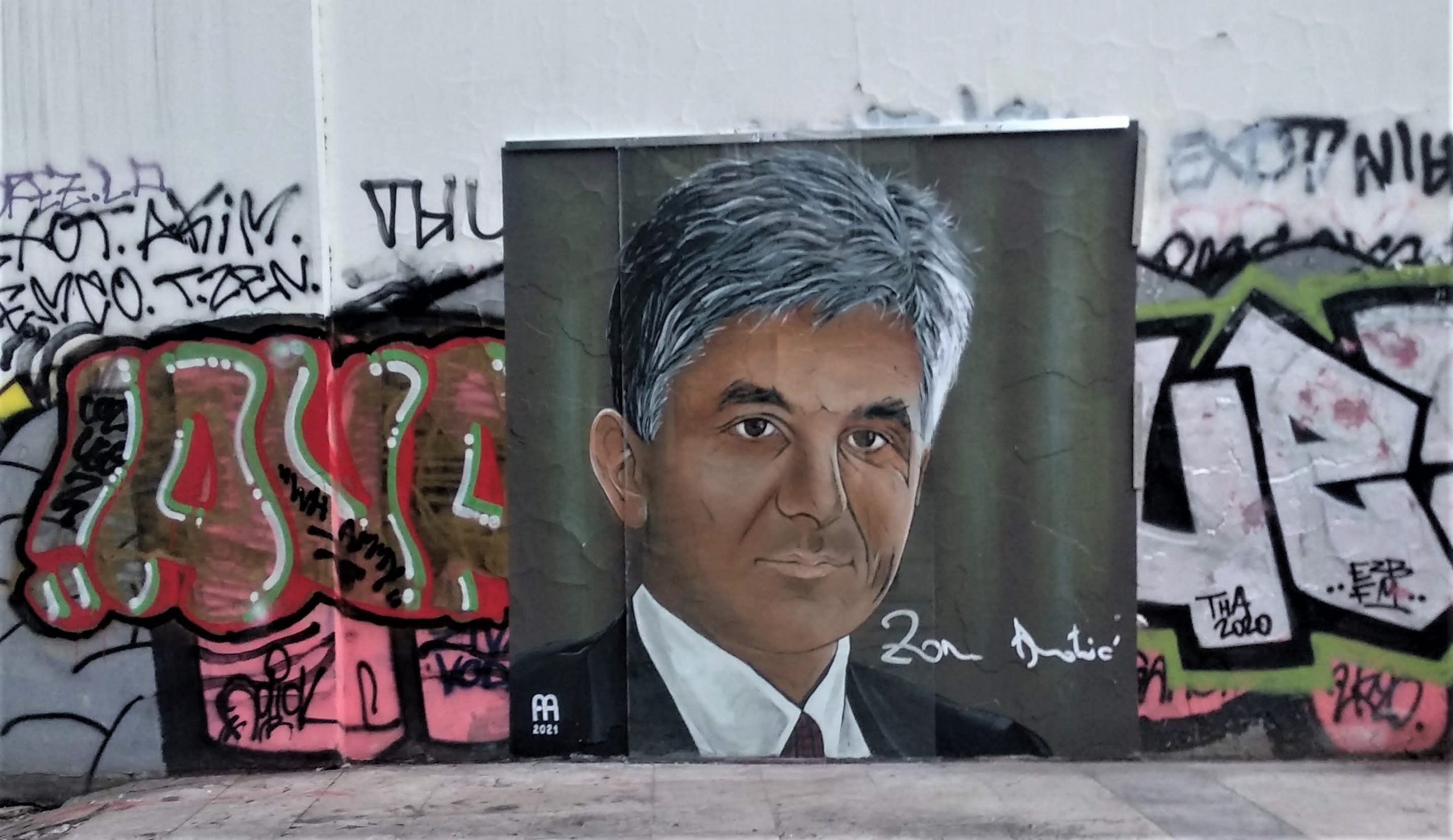

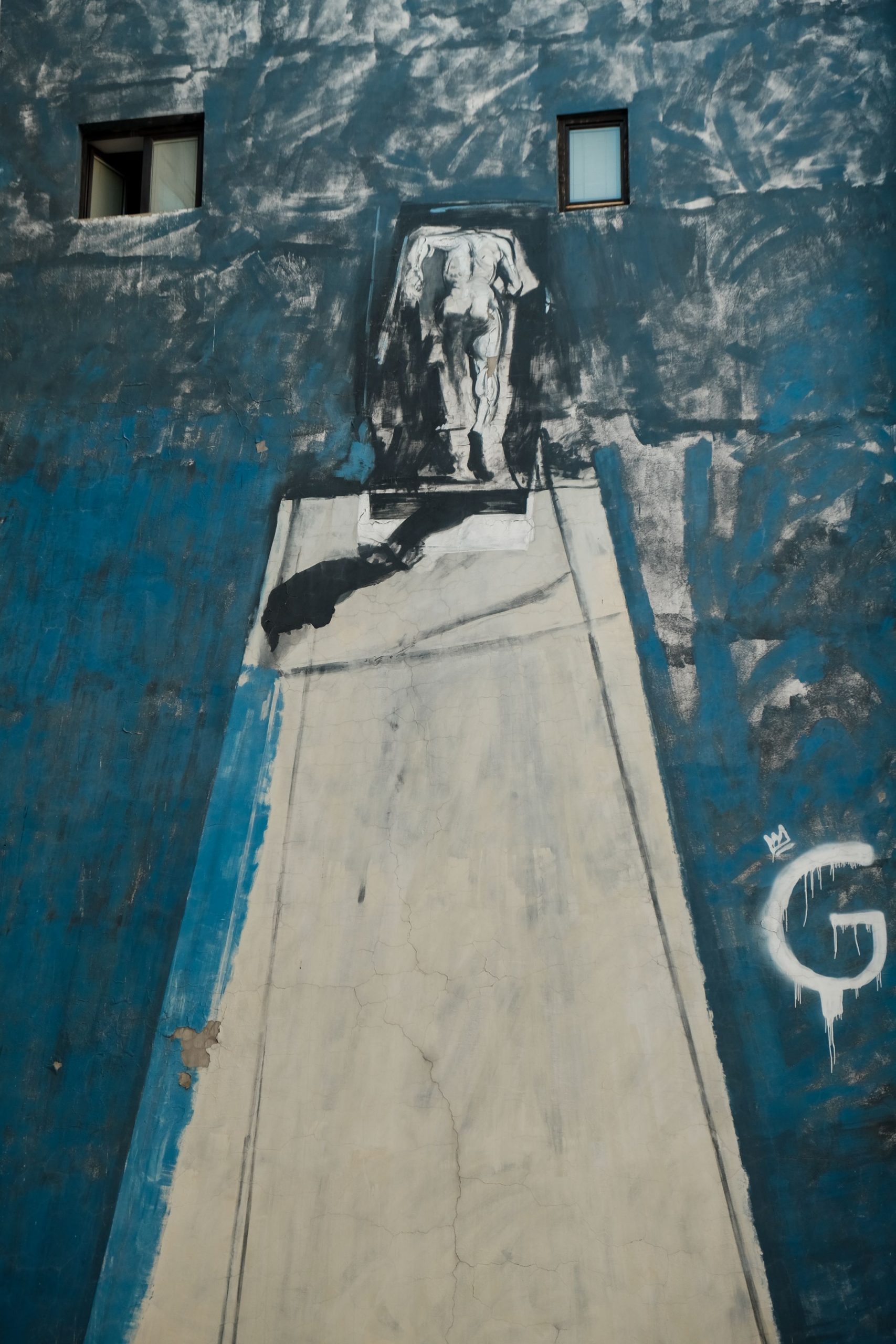
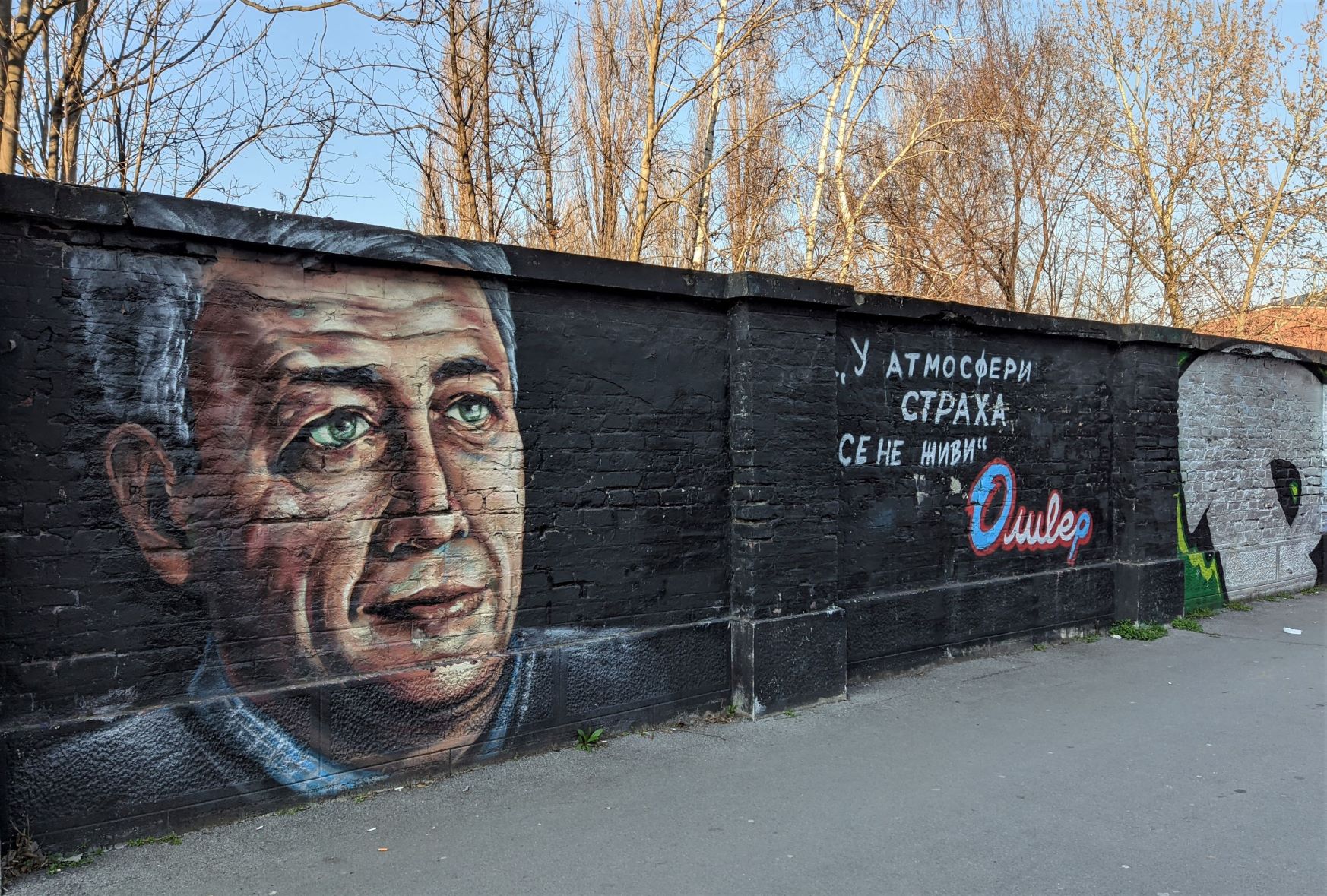
Commemorative murals of anonymous people
A special group of murals consists of commemorative portraits of anonymous, mostly young people who were killed or died in tragic accidents. By placing these murals in a public space, they acquire a general character, because their tragic death causes a collective resistance to the injustice they were exposed to or the misfortune that happened. They are an expression of collective memory with which the community wants to immortalize their young lives and remind them to be careful in preventing tragic events.
Such murals are usually painted in the immediate vicinity of where the person lived or where he spent his time. Such a mural was created on the occasion of the murder of Miloš Mileusnić, a student from Čačak who was killed as a bystander in Dimitrija Tucovića Street in 2019 when the murderer Neđeljko Đurović, in an unstable mental state, "randomly selected" stabbed him several times with a knife. His mural in Belgrade is located on Dorćol in Strahinjića Bana Street.
A fifteen-year-old girl, Minja Draganić, was the victim of a fire that broke out in the apartment where she lived with her parents in Dorćol. A mural dedicated to Minja is located at the "Braća Baruch" elementary school, which she attended.
On Zvezdara, near the Ivan Goran Kovačić school, there is a mural dedicated to Stefan Radojević—Radet, a young man who tragically died in a motorcycle accident on Dimitrija Tucovića Street.
On Vračar there is a mural dedicated to Nemanja Antic, a young man who died in a traffic accident near Ada Huja in 2014, while on the facade of the First Belgrade High School there is a mural dedicated to Miloš Janković, also a victim of the same accident.
On the building in Kraljice Marije Street , since 2022, there is a mural dedicated to the student Jovan Ivić, who committed suicide on that very spot.
Those commemoration actions are initiated in most cases by friends and family.
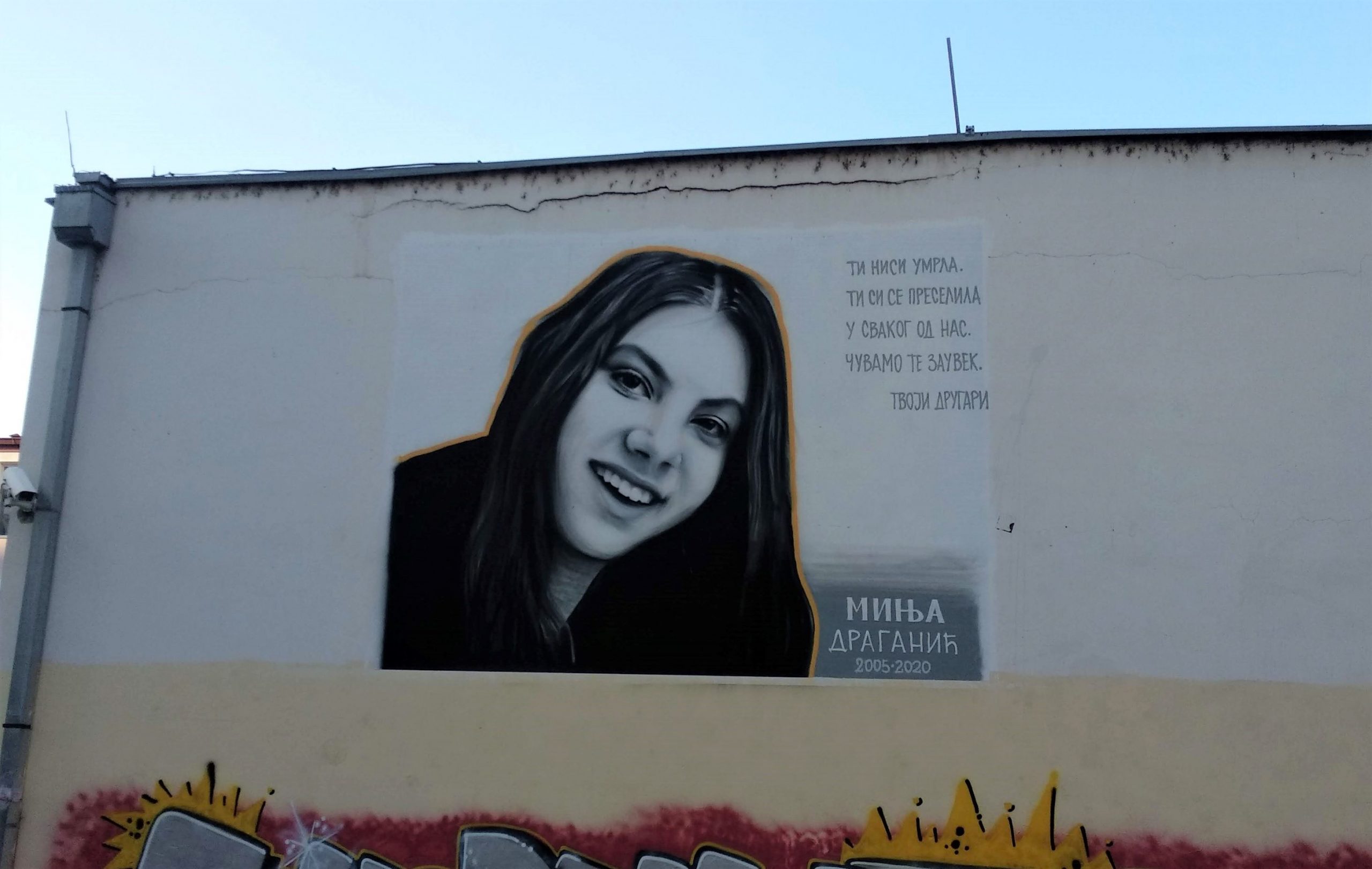
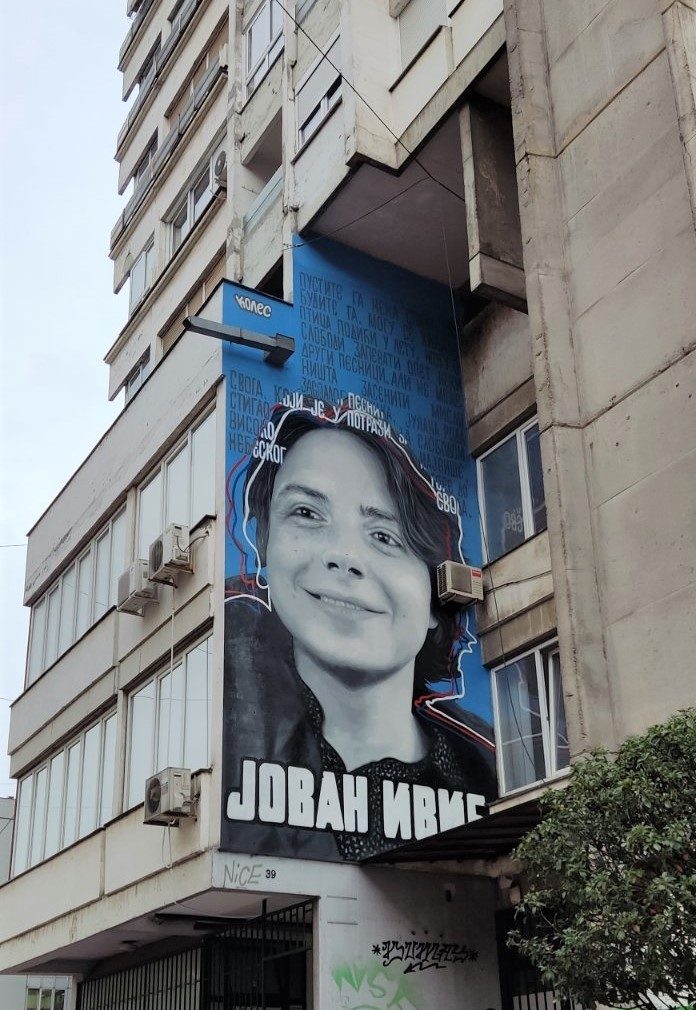
Murals of victims of hooligan and criminal murders
Football fans, known as "ultras", originated in Italy in the late 60s of the 20th century, and in the 80s they spread to other parts of Europe. Organized into football fan associations, ultras are characterized by passionate support for a football club, often linked to political ideology or ethnicity. Over time, some branches of ultras fan groups began to get involved in dangerous criminal activities.
Thus, subgroups of ultras fans, who deal with violence and organized crime, gathered hooligans into a well-organized criminal structure. These hooligan groups, due to the large number of murders that followed as a result of mutual confrontations, especially in the last decade, commission murals of deceased members, realistically painted in the style of GTR. However, these murals depict fans of different fan groups who belong to hooligan groups due to their criminal activities.
With this way of memorializing personalities, certain urban neighborhoods or units are demarcated in a picturesque way, and visual messages are sent to certain social groups. They can have overt or hidden meanings such as threat, revenge, or simply honoring the deceased. Particularly active in the sphere of commemorative street art are the fans of FC Partizan, the so-called Grobari. A number of commemorative fan murals are scattered around the city, and just near Partizan's stadium, there are now 13 murals dedicated to different people. These are individuals who, in addition to being fans, have a history of violent and hooligan behaviour. Mostly unknown to the public, these fans only used football support as a cover for certain criminal activities.
Among the series of murals of this type, the mural of Ljubomir Marković Kića, the former leader of Partizan's fan group "Alcatraz", stands out. Murals are dedicated to him at two locations in Belgrade, one in the Petlovo brdo neighborhood, the other in lower Dorćol. On the Dorćol mural there is a text that reads "You are the pride of Belgrade". Ljubomir Marković became known to the general public during the investigation into the murder of French fan Brice Taton in September 2009. Marković was then arrested, sentenced to 30 years in prison, in the meantime his sentence was reduced to 13 years, after which he was released from prison in 2017, and two years later he was killed.
On the street 27. Marta/Kraljice Marije in Belgrade, on the facade of a residential building there is a mural of a man with text that reads "Dovla 1978-2013". Dovla or Vlada Zlo were some of the nicknames of Vladimir Lukić, a fan of FC Rad, who was killed in the same street. Vladimir Lukić was part of the fan group of the mentioned club, "United force", as well as the leader of the neo-Nazi squad "Combat 18". In 27 Mart Street itself, as well as in the surrounding streets, a large number of stencils were drawn with the image of Vladimir Lukić along with the words Dovla underneath.
The mural of Alen Kostić, also known as Kubi, is located in the Belgrade neighborhood of Železnik, at the bus interchange. Alen was killed while he was the leader of the partisan fan group "Zabranjeni", against whom 15 criminal charges were filed at that time. It is believed that he was killed because of a conflict with the rival Partizan group "Alcatraz".
There is also a mural dedicated to Vladimir Vojvodić Vojvoda, the former leader of Crvena Zvezda fans, from the close circle of Željko Ražnatović Arkan, the leader of a criminal clan from the 1990s.
In New Belgrade, in Block 21, there is a mural dedicated to Velibor Dunjić, the leader of Crvena Zvezda fans, a group called "Hyenas". Velibor, against whom about 40 criminal charges were filed, was killed in front of a raft in New Belgrade. He is depicted unusually for a commemorative mural—in action, holding a megaphone in one hand. Next to the mural is the full text of Duško Trifunović's song "I made a lot of mistakes".
A mural dedicated to Luka Mišković, who was killed in front of the Konoba Akustik tavern, is located on the upper part of Dorćol. Luka, who had several criminal charges, was shot during his arrest because of a "bitter argument" with the owner of the said tavern.
The mural in Zdravko Čelar street is dedicated to two Partizan fans, who are represented only by their nicknames—Vlajko and Grobi. Vlajko was Vladimir Živković, a member of the partisan fan group "Zabranjeni", who died after being stabbed by a member of the rival partisan camp "Alcatraz". Grobi is the nickname of Ivan Perović, also a member and sympathiser of the "Zabranjeni" group, who was killed by a firearm in New Belgrade by members of "Alcatraz".
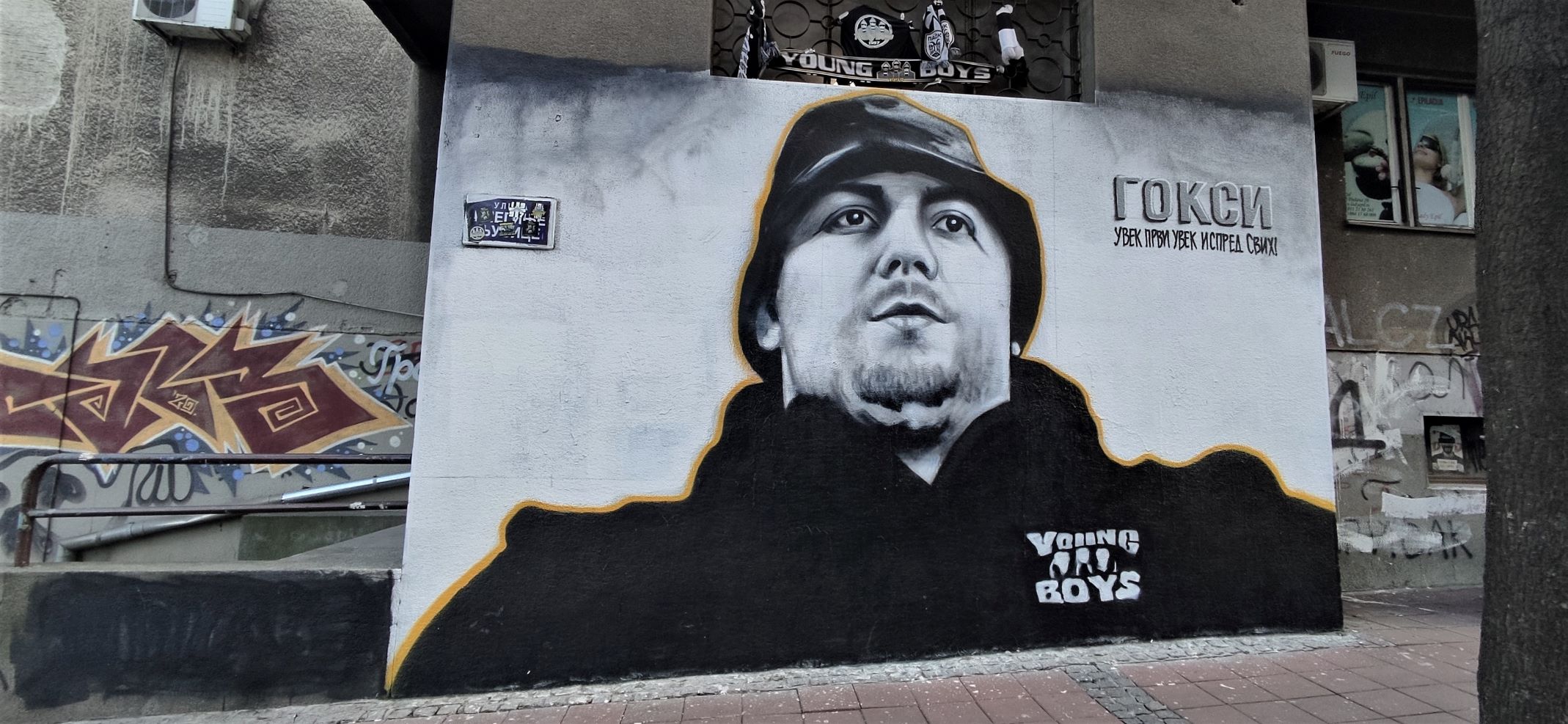
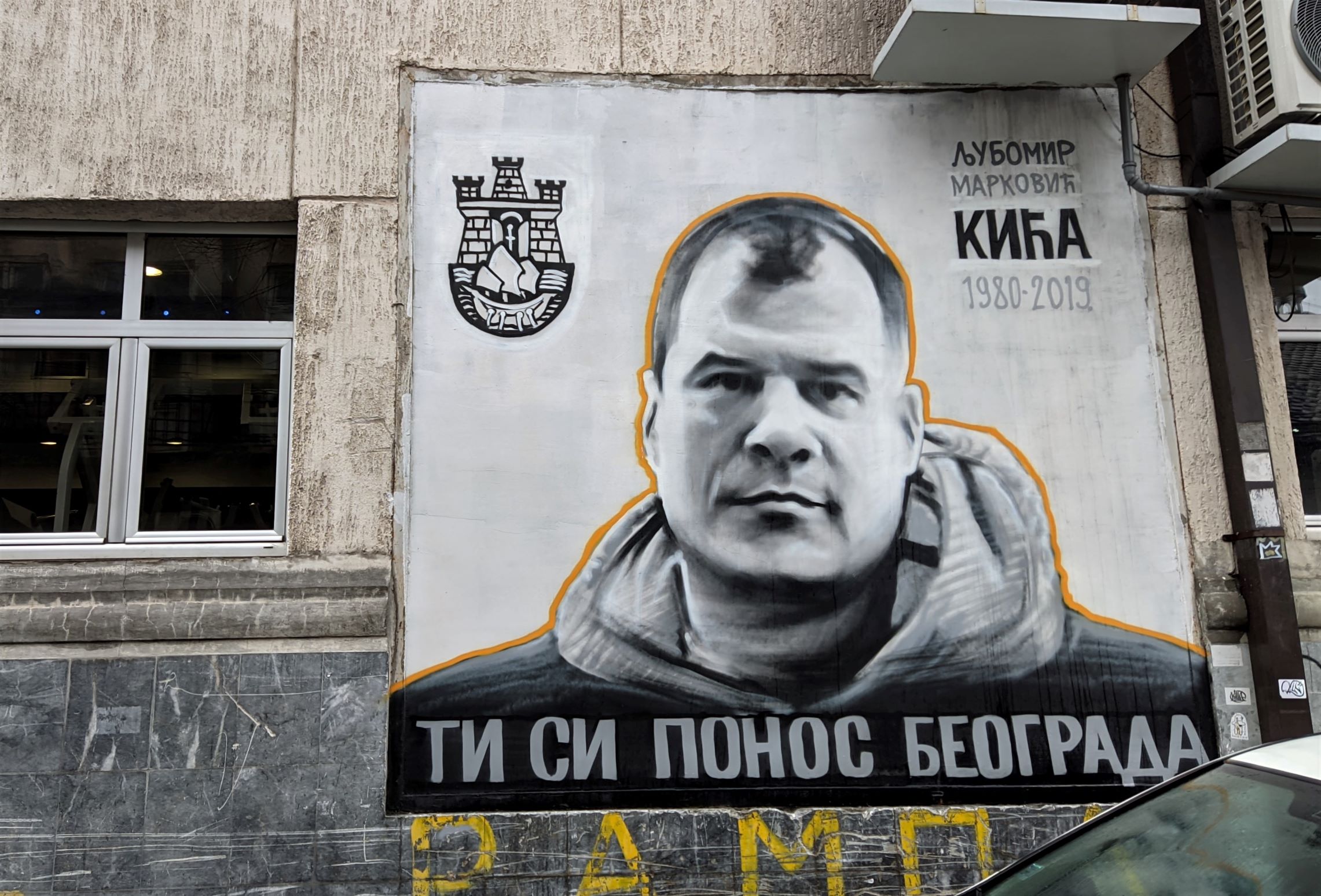
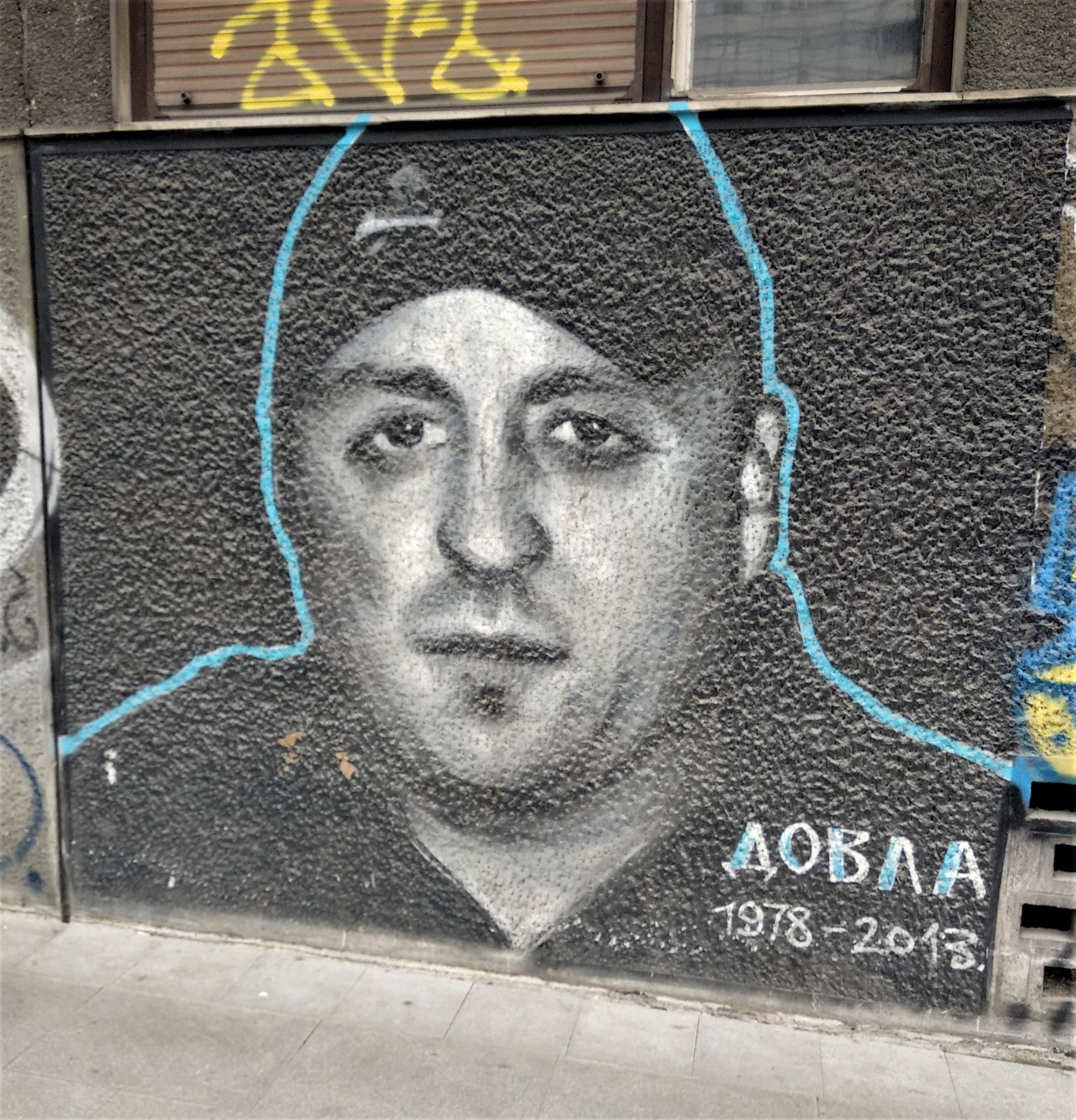
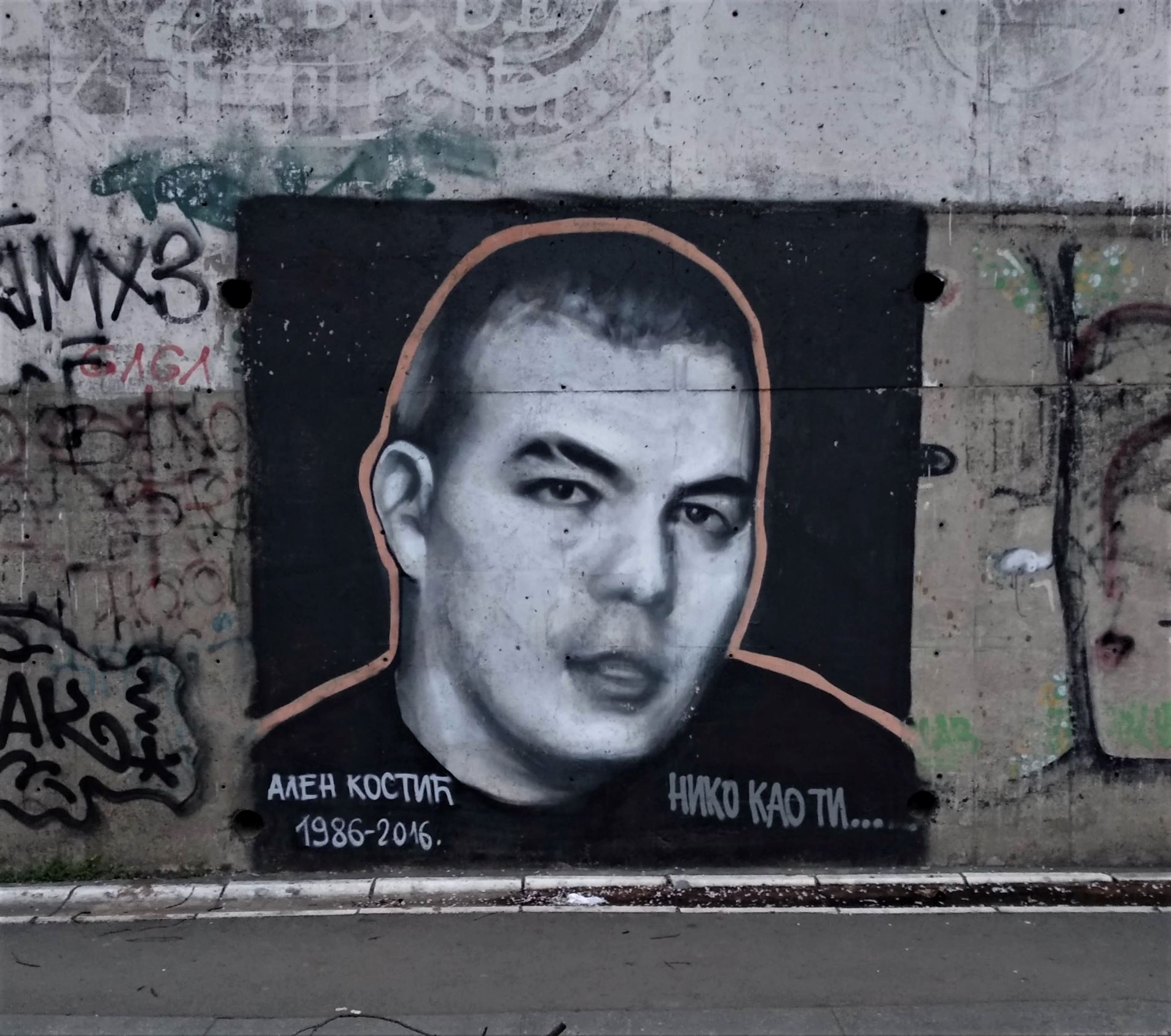

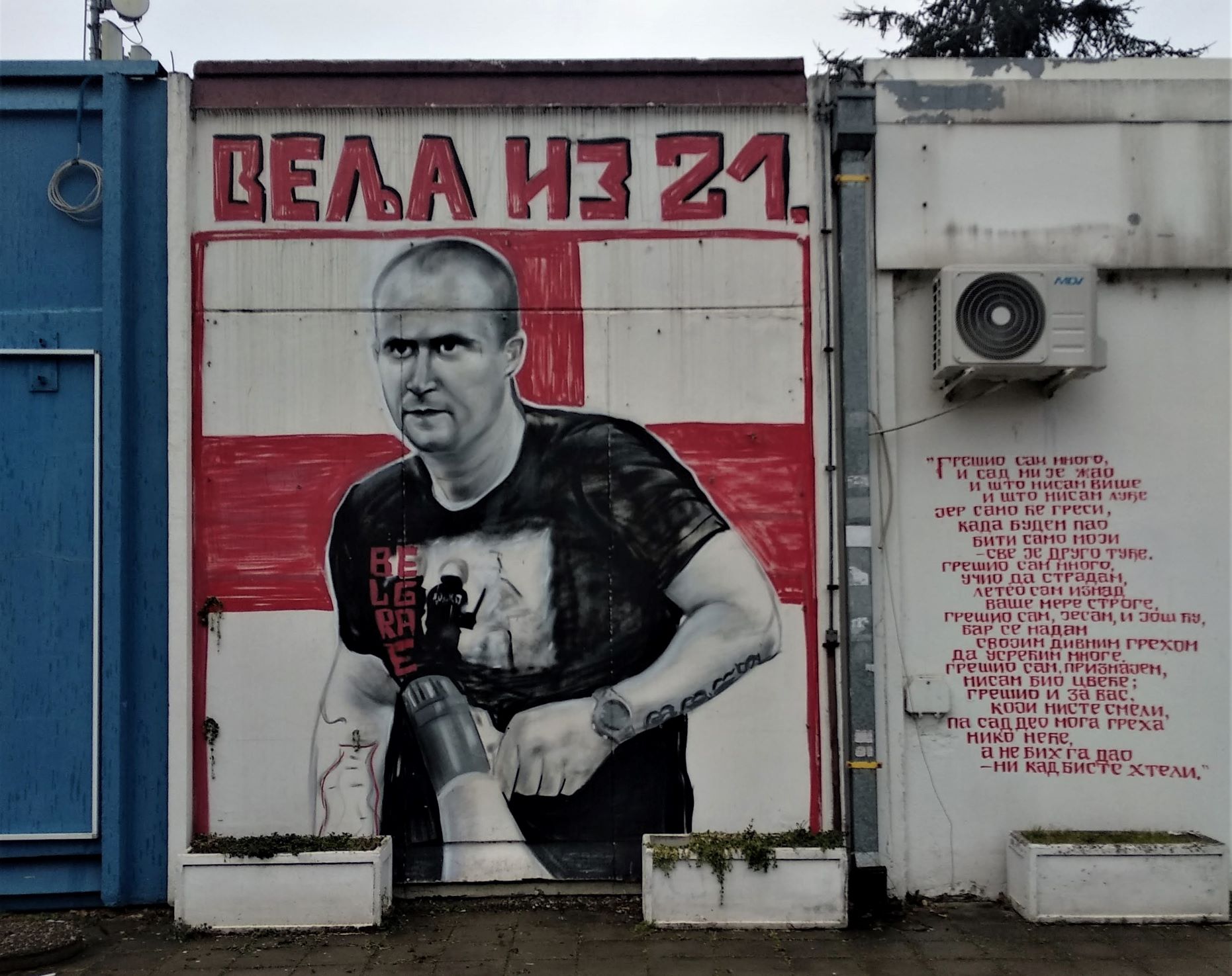
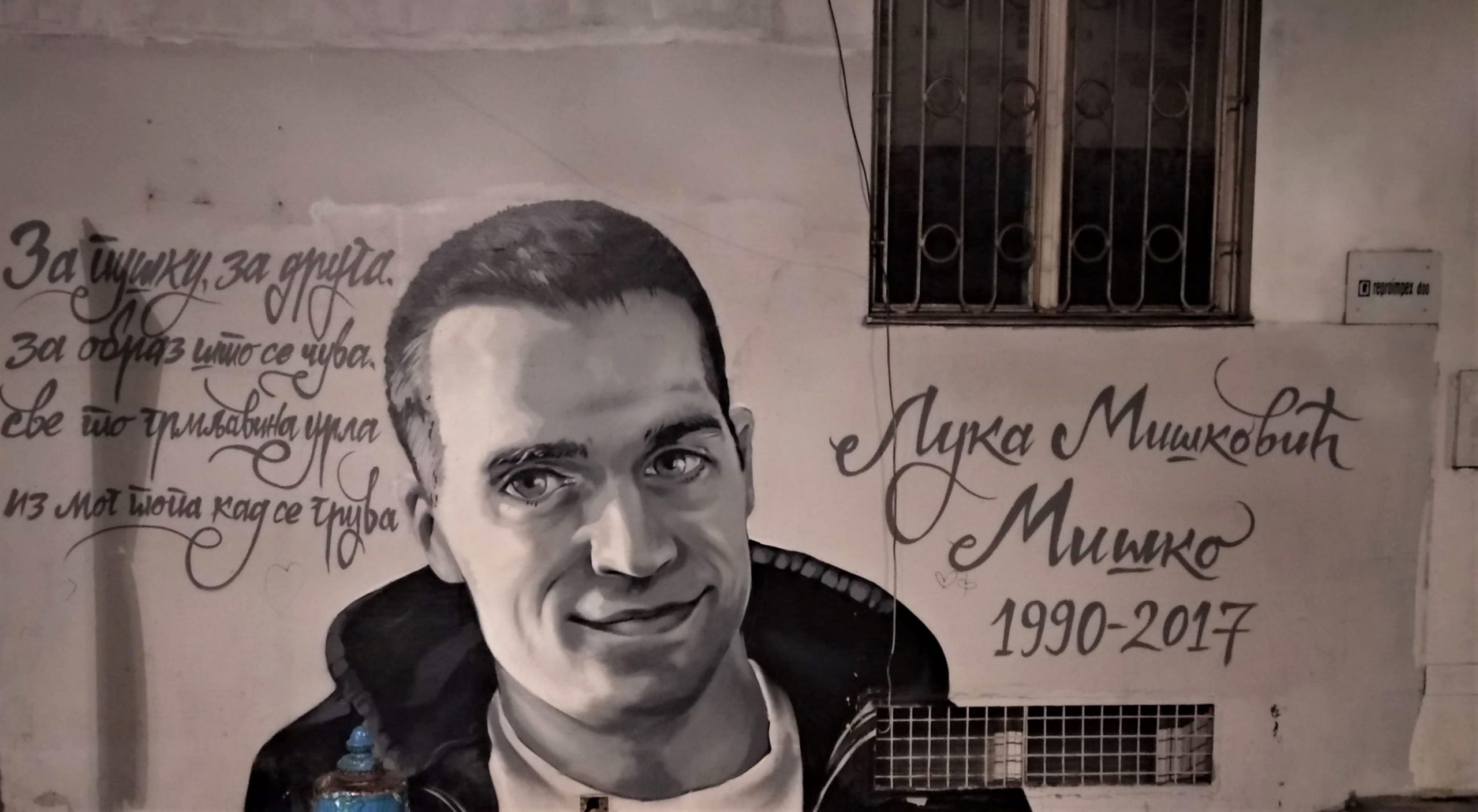
Autor: Hana Šuica

